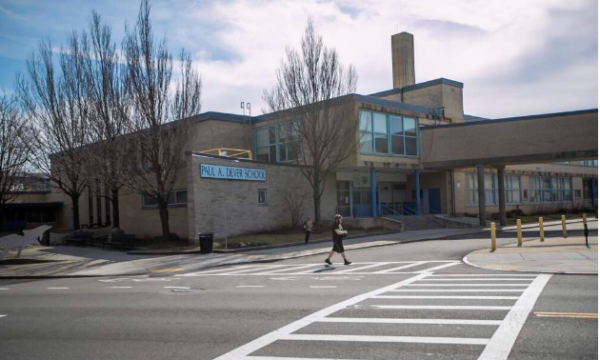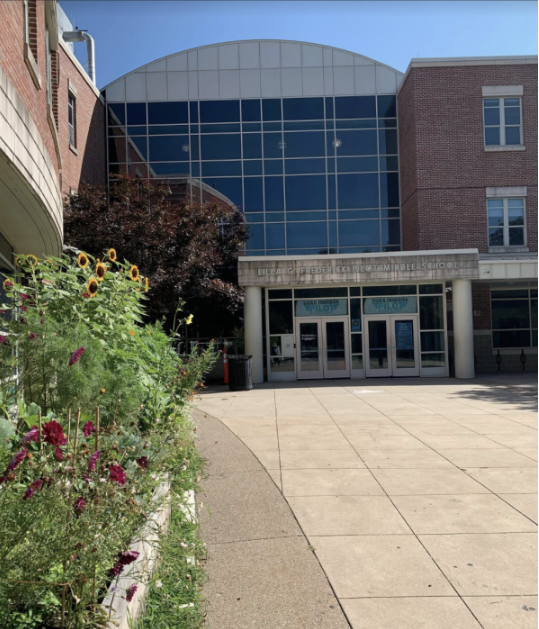January 7, 2025

Paul A. Dever School on Mount Vernon Street in Dorchester's Columbia Point. Jesse Costa/WBUR photo
Clap, Winthrop to merge in Frederick space while Dever will close outright
Three Dorchester school buildings would close after the 2025-2026 academic year under a plan announced by Mayor Wu and BPS Superintendent Mary Skipper on Tuesday. The announcement— which included confirmation that the Excel High School in South Boston will also close— came after three years of study and discussions with parents and educators.
RELATED: Dever School decision comes as a surprise to some
The decision— if approved by the Boston School Committee as expected— will result in the outright closure of the Paul A. Dever School on Columbia Point. Two other elementary schools— Roger Clap on Harvest Street and John Winthrop on Brookford Street— will merge and relocate to the Lilla G. Frederick Pilot Middle School on Columbia Road, which was already slated to close at the end of the current academic year.
Once reopened, the Frederick site will house as many as 650-700 students and include a dual-language English and Cape Verdean Creole academy modeled on a successful dual-language Haitian Kreyol academy within the Mattahunt School in Mattapan.

Above, the Lilla G. Frederick building on Columbia Road. Reporter file photo
Two other city schools— Mary Lyon Pilot High School in Brighton and Community Academy in Jamaica Plain— will also close. Those changes would take effect after the end of the 2025-2026 school year.
In Dorchester, the Dever Elementary on Columbia Point will stop accepting new students to its classrooms after this current school year. Students in grades 5 and 6 will continue on track to matriculate from the Dever on a normal schedule over the next two years, but students in earlier grades will be transferred to new locations.
The Dever is located directly next door to the Ruth Batson Academy, which was re-named last year but was formerly the McCormack-BLCA campus. BPS is currently seeking state funds to build a new complex for Batson Academy, which includes grade 7-12. The city won a victory in December when the Massachusetts School Building Authority voted to include the academy on its list of approved project to fund in the future.
Supt. Skipper said on Tuesday that she believes that “we will need the Dever property” as the planning for an expanded Batson Academy complex moves forward.
In the case of the Clap and Winthrop elementary buildings, Skipper said there is no plan yet for any potential re-use of the buildings on Harvest Street and Brookford Street, respectively. The buildings will go “offline” at the close of the 2026 academic year and “future uses will be considered. Right now, we don’t have a specific plan for those buildings,” Skipper told reporters.
The closure of Excel High School on South Boston’s Dorchester Heights would happen at the end of the 2026 academic year. But Skipper indicated on Tuesday that the building itself would be renovated and eventually re-open as an “anchor high school.” She said that “the intent would be to do some investment in that building,” noting that Excel High School currently only occupies roughly one-third of the former Southie High space.
“It has very good bones,” she said.
Skipper estimated that the closures, mergers, and grade adjustments announced on Tuesday would likely reduce costs to the school district amounting to perhaps $10-20 million once affectuated. But, she said, cost savings was not the object of the decision.
“Our intent is to reinvest some of the dollars because we need to be able to reinvest to create high-quality seats,” Skipper said.
The mayor echoed that sentiment. “The proposals today come out of three years of focused and intentional work to get this right,” she said, calling the facilities plan “a new approach on how to finally get things done that have been needed for decades.” She added, “I know as a BPS mom and mayor the magic that is happening in every single one of our classrooms across the district every day,” but, she noted, they are happening “despite the conditions of the buildings they are in.”
The method behind the closure decisions have been derived in part from a scoring system and a “real-time database of conditions within each building,” Wu said.
“We are making decisions based on criteria vetted in the community,” she added.
Skipper said that while BPS has seen a steady decline in enrollment in recent years— a trend that dates back decades—this latest round of decisions are based on projections through the year 2030 that suggest a “leveling-off” in the post-Covid years.
“We’ve seen enrollment stabilize,” said Skipper. “And that gives us confidence that we won’t see a dramatic decrease, but a leveling off.” She added, “I think that’s very good news, that people are choosing BPS.”
The rationale for outright closings varies, but the district says it used a framework that included low scores for “building experience,” which includes insufficient space to provide “a full range of inclusive programming for students with disabilities and multilingual learners.”
Cassidy McNeeley contributed to this report.


